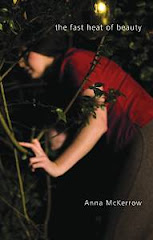In the past I’ve used Moleskine notebooks and now I use these amazing, hardcover, big journals from Peter Pauper Press. You can order them online (in the UK – from Amazon. SORRY) and they always have beautiful designs. At the moment I have one of their antique bookbinding designs, The Cosmology Journal, and let me tell you it’s possibly the most beautiful notebook I’ve ever owned. Apparently it is “adapted from the celebrated Catalan Atlas (1375), attributed to master map-maker Abraham Cresques of Majorca, Spain. This cosmological diagram places earth in the center, personified by an astronomer holding an astrolabe. Around the earth, the elements, planets, signs of the zodiac, and moon phases are displayed within concentric circles, and the four seasons are portrayed in the corners.” Woah. Irritatingly, I can't upload pics here for the moment for some reason, but look at the link.
See, the thing is, in my opinion, your journal/notebook needs to feel special. You need to love it and feel excited about writing in it. So, find something cool.
I do really, heartily recommend that this is an actual book with paper pages in it. I also recommend that you get a decent sized book. No piddly 1980s phone book sizes. You need to be able to scrawl. You need space. As an acting teacher I knew once said when complaining about having a small rehearsal room – I’ve got a class of lions and they need to prowl.
Your journal will be the place that you prowl, writing-wise. Where you write all of your plans for stories, scribbled two-line rhymes, reworkings, thoughts, cut out pictures from magazines, quotes copied from books, odd diary entries, observations and descriptions of funny people you met on the train. No-one will read it apart from you: it’s your messy creative space. Messy space needs… space.
However, that said, I’ve had students in the past that preferred to keep all their writing online – mostly because they found using a pen and paper difficult for one reason and another – in which case, apart from keeping a big word doc in a special private folder for these journal-ish thoughts, it’s good to look at something like Pinterest. Pinterest is an online scrapbook, a pinboard, where you can collect images that inspire you and organise them under different subjects. You can then follow other users who are pinning stuff you like, like their pins etc. I have a few boards – mostly not writing oriented, more “expensive dresses I like” for fun, but I also have pinboards of atmospheric pics that are mood boards for all my writing projects. You can check out my Pinterest board for CROW MOON here. Incidentally, this is something that publishers seem to love, as it helps them envisage your story world, especially when it comes time for cover design.
But anyway, using either a notebook or Pinterest (or both) will provide you with a place to draw together inspiring pictures, quotes, text, photos, art, newspaper stories – anything that interests you and makes you think hmmm, I’d like to do something with that at some point. That’s the point, right?
The other thing I love about keeping a writing journal is it makes me feel like a writer (self image is all; if you don’t believe you can do it, you can’t and won’t do it), and it also makes me feel productive. Even if all I’ve done writing-wise all week is to note down a few plot ideas for my current project, I feel like I’ve done something. It’s hassle free, I don’t have to be neat or produce something with an arc. Damn arcs.
It keeps me current, it keeps me in the flow of writing. You might not have danced the tango that week but you did your stretches.
One of my favourite poets, Bernadette Mayer, has a famous set of journal ideas as part of her Writing Experiments – a huge list of quirky ideas for writing projects. If you’re having trouble thinking about what to do in your journal, do some of these:
Write entries in your journal about:
* Dreams
* Food
* Finances
* Love
* Beautiful and/or ugly sights
* Reading/music/art, etc. encountered each day
* Rooms
* Weather
* People one sees-description
* Subway, bus, car or other trips (e.g., the same bus trip written about every day)
* Pleasures and/or pain
* Answering machine messages/telephone calls
* Colour
* Light
* The body and its parts
* Clocks/time-keeping
* Tenant-landlord situations
* Skies
* Dangers
* Sounds
* Coincidences and connections
* Times of solitude
Other ideas:
* Write once a day in minute detail about one thing
* Write every day at the same time, e.g. lunch poems, waking ideas, etc.
* Write minimally: one line or sentence per day
If it helps, write the above list as a reminder of topics in your journal to refer to. Don’t impose limitations on how much or little you write in one go (unless you are doing the “one sentence per day” rule), and most of all, don’t limit your imagination.
So, to review: as well as being a messy creative space, keeping a writing journal will:
- Become a rich store of ideas you can rework, steal and come back to later
- Make you feel like a writer
- Give you a place to write without feeling like you have to finish anything or create a whole piece
- Keep the momentum of your writing going – in a week, if you haven’t written anything else but done some stuff in your journal, you’ll still feel productive
Go and journal, my friends, and be free.






No comments:
Post a Comment